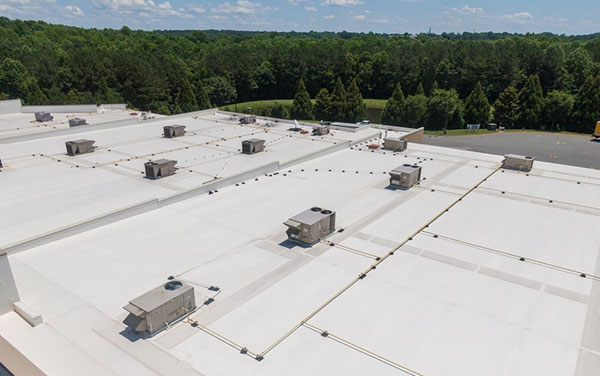Preventive Roof Maintenance: A Quick Guide for Commercial Contractors
Author: Lee Polevoi | October 31, 2024
Your customers depend on your preventive roof maintenance skills, as part of an overall roof maintenance plan for their commercial building. By meeting (and exceeding) these expectations, you'll likely be rewarded with a loyal, long-term customer base.

Why Is Commercial Roof Maintenance Important?
Roofing contractors must be clear and straightforward when discussing commercial roof issues with building owners and other customers. The reward for ongoing roof inspection and maintenance includes these key benefits:
- Savings on energy costs
- Prevention of potentially crippling water damage
- Adding years to a roof's life span
- Protection of the commercial building's structural integrity
A well-maintained roof also enhances the "curbside appeal" of a commercial building. Customers and visitors are more inclined to be impressed by, and do business with, an attractive-looking place of business (rather than one with unsightly water stains, corrosion and other damage).
The Consequences of Neglect
The negative consequences of a neglected roof are most obvious in regions where extreme weather patterns are common. But all rooftops, commercial or otherwise, are vulnerable over time to any or all of the following conditions:
- Heat causes roofing materials to expand and contract, which can lead to leaks, cracks and general disrepair.
- Strong winds can dislodge roofing materials, scatter unwanted debris over a roof and lead to damaging water seeping through openings.
- Heavy rainfall also increases the risk of leaks, as well as damage due to ponding, rust and/or decay of roofing materials.
- Snow can also cause water damage, and if snow layers are heavy enough, it can pose a threat to a building's structure.
- Excessive hail can harm insulation and negatively impact commercial roof membranes.
Without preventive roof maintenance, damage caused by natural elements can result in expensive repairs, not to mention water leaks that harm a building's interior (business products and materials, electronic equipment, and so on). If major roof restoration becomes necessary, normal business routines may be adversely affected, with a resulting loss of productivity, temporary interruptions to operations and — in especially bad situations — potential physical harm to employees and visitors alike.
What to Include in a Roof Inspection
The ideal approach to roof maintenance is a twice-yearly commercial roof inspection. Any issues encountered in an early stage are more easily repaired (and at less cost). It's also a good idea to contact customers about a roof inspection right after a heavy snowstorm or thunderstorm.
A thorough roof inspection encompasses the roof's general condition and structural integrity. Close scrutiny of the following should also be included:
- Ponding or other standing water, caused by clogged gutters or downspouts
- Equipment situated on the rooftop (solar panels, exhaust fans, HVAC systems, etc.)
- Debris left behind after a storm
- Loose or damaged flashing due to heavy winds
- Unwanted plant life, mold or mildew
- Prior repairs in need of upkeep
- Skylight damage (leaks, cracks, etc.)
Around the roof perimeter, check the corners, base flashing, seams and coping joints. Keep an eye out for penetration areas, where holes have been made to accommodate equipment (HVAC, ducts, vents, etc.). Any vulnerable openings can easily lead to tears, ruptures and leaks.
The results of this comprehensive inspection should always be documented, both for the customer's benefit and so you have a complete historical record of specific roof repair and overall condition. Make a note of potential issues, so they can be addressed before large-scale repairs are needed.
Provide Expert Advice to Customers
Your customers depend on your expertise and suggestions with respect to scheduled and/or preventive maintenance. Encourage them to see you as their partner in this area, so they feel free to contact you with any concerns between inspections.
Of course, a high-quality roof maintenance plan often involves more than just a twice-yearly inspection. Provide a "big-picture" view for your customers of related matters, such as the ongoing impact of environmental and other factors on a roof's life span and any other concerns specifically related to a commercial building's history and location.
It's always preferable to head off potential problems before they get out of hand. Your customers will greatly appreciate your skills and dedication to providing first-rate care for their building's rooftop and overall structural well-being.